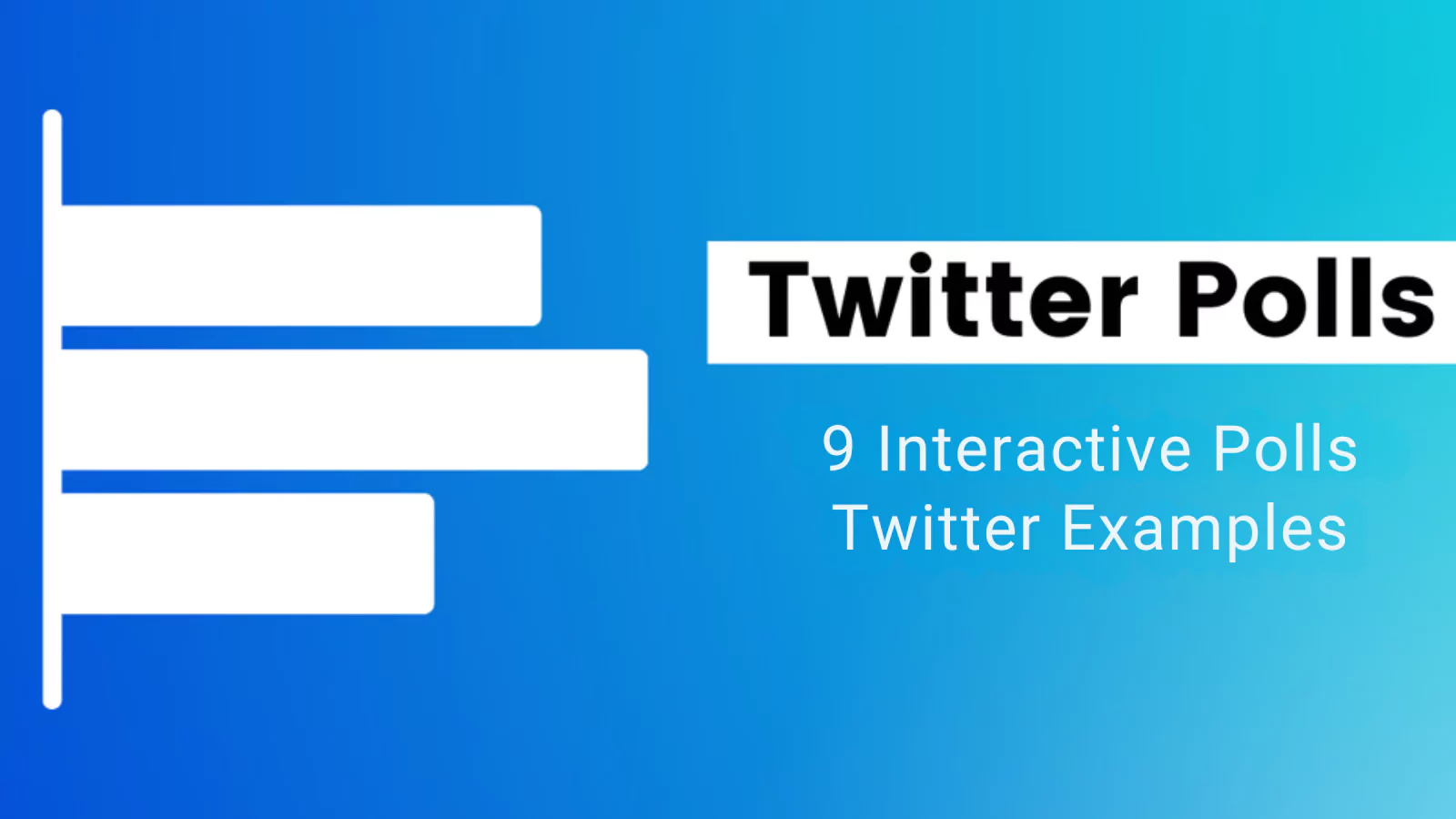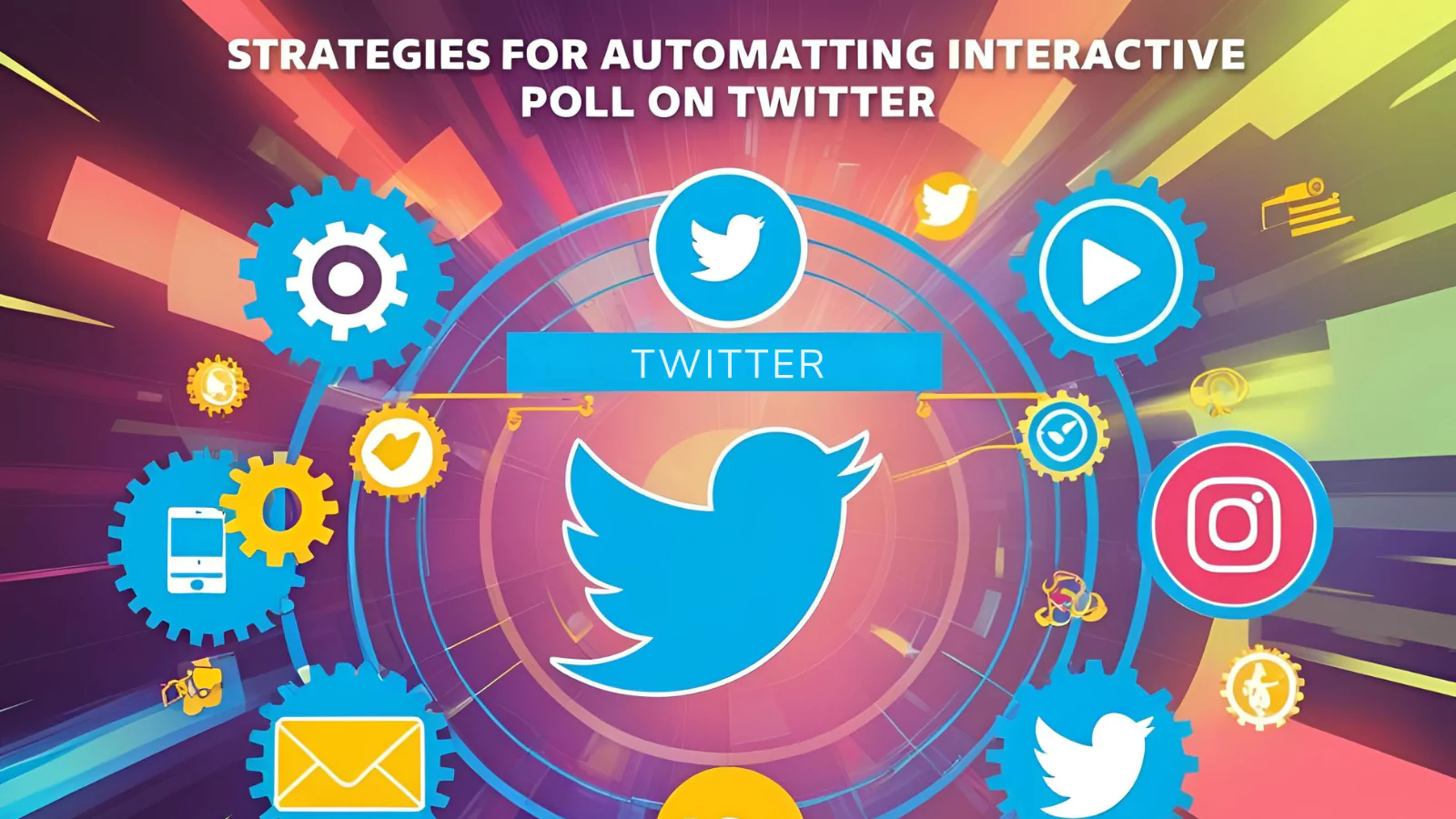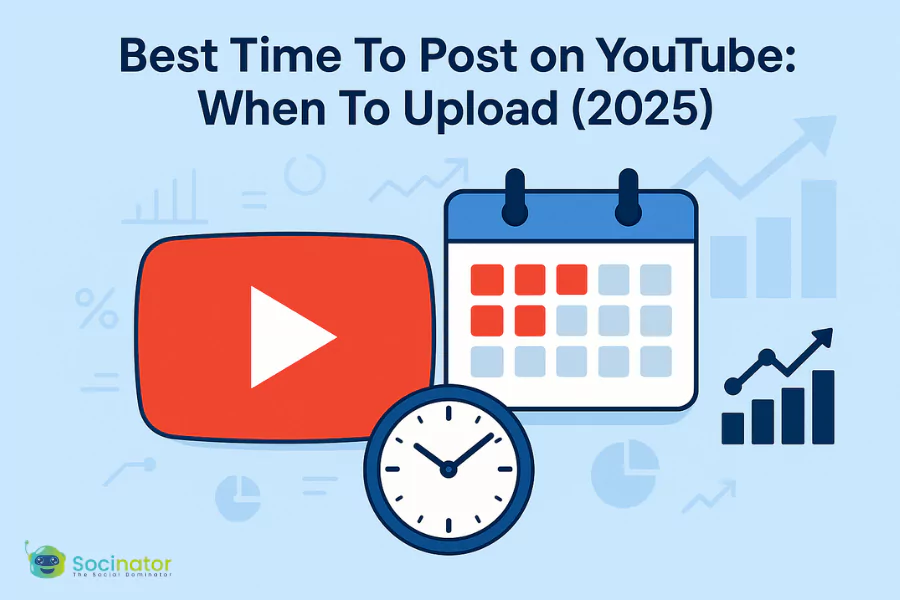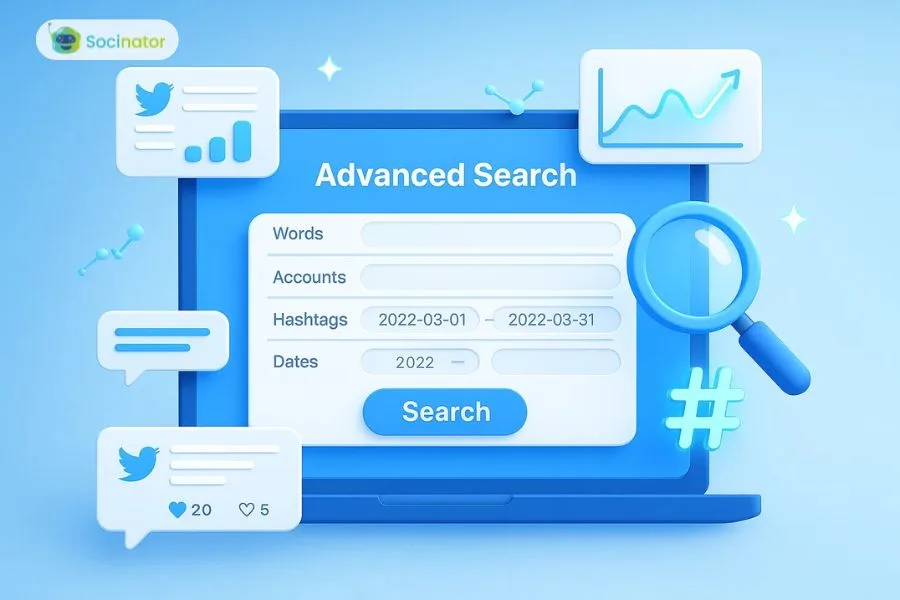Every tweet carries the potential to start a conversation, yet many fall silent among the noise. A single click on “Tweet” often signals the start of a waiting game where thoughts and opinions can be overlooked. However, there is a proven method to shift from mere posting to sparking genuine engagement. This guide highlights how interactive Twitter polls can transform a passive audience into active participants and power genuine discussions.
By using simple yet thought-provoking questions, your feed can become a dynamic hub of interaction. In this article, we explore how brands have applied interactive polls and Twitter techniques to capture attention and drive conversations. The journey begins with understanding the true value of polls and then moves through carefully crafted examples that show how to integrate polling into every facet of your strategy.
Fasten your seatbelt as we delve into the world of conversational catalysts and learn to elevate each tweet to a point of connection.
Listen To The Podcast Now!
Why Interactive Twitter Polls Are A Must For Modern Brands?
 Interactive engagement isn’t just a nice-to-have; it is quickly becoming essential. With audience behavior shifting toward platforms that encourage participation, a well-executed poll can be a game-changer. Twitter polls, at their core, are simple: set a question, offer four response options, and let your followers decide. What might appear an easy task holds a secret—each vote is a gateway to deeper insights and connections.
Interactive engagement isn’t just a nice-to-have; it is quickly becoming essential. With audience behavior shifting toward platforms that encourage participation, a well-executed poll can be a game-changer. Twitter polls, at their core, are simple: set a question, offer four response options, and let your followers decide. What might appear an easy task holds a secret—each vote is a gateway to deeper insights and connections.
When the right question is asked at the right moment, interactive polls Twitter have the power to drive meaningful user interaction. They provide instant feedback, offer a snapshot of follower interests, and even shape subsequent content based on real-time insights. As we progress further, we will see how this tool not only enhances user engagement but also uncovers valuable audience data that fuels content strategy.
Transitioning now, we will examine concrete examples from brands that have mastered this technique, setting a foundation for creative polling strategies that can be tailored to any target audience.
9 Interactive Twitter Polls Examples (And What You Can Steal)
 Twitter’s polling feature is fast becoming an essential tool for brands and individuals looking to invite conversation and deepen engagement. When crafted thoughtfully, a well-designed poll can transform a simple tweet into a vibrant conversation starter that informs your strategy and builds lasting connections with your audience. In the following sections, we explore nine real-life examples of how different organizations have effectively used Twitter’s polling function to drive interaction, gather opinions, and shape future content—all without altering the original outline.
Twitter’s polling feature is fast becoming an essential tool for brands and individuals looking to invite conversation and deepen engagement. When crafted thoughtfully, a well-designed poll can transform a simple tweet into a vibrant conversation starter that informs your strategy and builds lasting connections with your audience. In the following sections, we explore nine real-life examples of how different organizations have effectively used Twitter’s polling function to drive interaction, gather opinions, and shape future content—all without altering the original outline.
Example 1: Codility – Stir Controversy (Without the Drama)
Codility, a platform that tests and trains developers, took a bold step with a straightforward question: “Should developers work weekends? Yes/No.”
The Result:
This query sparked a surge in attention. Not only did Codility witness a significant number of votes, but the question also ignited a robust discussion, producing almost five times as many replies as their standard tweets.
Behind the Debate
Codility’s poll tapped into a subject that is highly relevant within the tech community.
- User Engagement: Developers and tech enthusiasts were eager to share their experiences and opinions.
- Balanced Perspective: By framing the question neutrally, the poll avoided polarizing the audience excessively while still stirring debate.
Key Takeaways
This example demonstrates that choosing a relatable, thoughtful topic can lead to a broader discussion. The success here shows that letting the subject speak for itself, rather than artificially inflating the debate, results in genuine interaction.
Example 2: Airtable – Simplify Choices for Maximum Votes
Airtable, known for its versatile project management solutions, asked its audience: “Which feature saves you time? A/B/C.”
The Result:
The poll saw an impressive 80% participation rate. By limiting the options and eliminating ambiguity, Airtable made it easy for users to register their opinions promptly.
Delving Deeper into Simplicity
- Clarity in Options: Clear and concise choices ensured no second-guessing was needed.
- Rapid Decision-Making: The straightforward nature of the question appealed to users who appreciate efficiency, leading to quick votes.
Lessons Learned
Airtable’s approach highlights that reducing cognitive load can lead to high turnout. The effectiveness of this strategy proves that making things simpler can often be more engaging—a crucial insight for anyone designing a poll.
Example 3: Revolut – Turn Polls Into Threaded Stories
Revolut, a global fintech company, addressed a common financial concern by asking: “What’s your biggest budgeting hurdle?”
The Result:
The poll’s outcome sparked the development of a series of follow-up tweets that evolved into a threaded discussion. This approach helped triple the number of retweets while users exchanged valuable personal insights.
Extending Engagement Beyond the Poll
- Threaded Follow-up: Revolut utilized responses to launch further conversation, effectively transforming the poll into a narrative.
- User-Generated Content: The threaded replies offered real-life advice and created a sense of community sharing, proving that engagement need not end once the poll closes.
Strategic Implications
By repurposing poll responses into ongoing discussions, Revolut maximized the content’s lifespan. This case teaches us that Twitter interactive polls when extended into multiple tweets, have the ability to deepen user engagement and provide a continuous stream of insights.
Example 4: Allianz – Shaping Your Content Strategy
Allianz, a leading insurance provider, engaged its audience with: “What insurance aspect matters most to you? Coverage/Pricing/Service.”
The Result:
The poll prompted noticeable engagement as it addressed the everyday concerns of policyholders. Users contributed thoughts that extended beyond a simple vote.
Analyzing Consumer Concerns
- Direct Relevance: The query is directly connected with consumer priorities, prompting thoughtful feedback.
- Actionable Insights: The responses provided Allianz with data that could be used to tailor future service offerings and marketing messages.
Impact on Content Planning
This example clearly illustrates that polls, when designed to address real consumer pain points, can serve as engagement tools and vital instruments for strategic planning. By listening to users, brands can adapt their content strategy to better align with audience expectations.
Example 5: Brand Y – Engaging the Skeptical
Brand Y, a company known for its high-quality products, deployed a poll asking: “Which factor influences your purchase decision the most? Price/Quality/Brand Reputation.”
The Result:
The poll generated thoughtful responses, leading to a dynamic discussion that extended well beyond the initial vote. Users detailed their decision-making processes, contributing valuable qualitative insights.
Fostering In-Depth Feedback
- Candid Opinions: Users provided honest feedback, sparking nuanced debates about what matters most in a purchase decision.
- Community Dialogue: The poll opened up an opportunity for followers to share personal experiences, enriching the brand’s understanding of its market.
Strategic Relevance
This example shows that engaging the skeptical through clear yet open-ended questions can lead to a wealth of insights. Interactive polls Twitter can break down barriers, encouraging customers to share their true opinions, vital for refining marketing strategies.
Example 6: Case Of Customer-Centric Engagement – Tailoring Experience
A mid-sized company sought to involve its customers in a product decision by asking: “Which feature should we focus on next? Option A/Option B/Option C/Option D.”
The Result:
Engagement soared as customers felt empowered to influence the product roadmap. Every vote signified more than just a choice—an expression of trust and participation.
Building Loyalty Through Inclusion
- Empowerment: Customers who see their opinions reflected in product decisions are more likely to remain loyal and engaged.
- Direct Impact: The poll provided tangible insights that fed directly into the company’s development process.
Customer Engagement Insights
The success of this poll demonstrates the importance of involving consumers in shaping a brand’s future. When they feel heard, not only does engagement rise, but customer loyalty is also strengthened, leading to improved products and stronger relationships.
Example 7: Balancing Poll Fun And Factuality – A Dual Approach
To appeal to both light-hearted and practical-minded users, one brand asked: “Do you prefer virtual or in-person events? Virtual/In-person.”
The Result:
This poll achieved high participation by blending a fun question with a topic of practical relevance, resulting in a balanced conversation full of humorous and insightful commentary.
The Art of Dual-Approach Polling
- Entertainment Value: The question’s light-hearted nature engaged users looking for a quick laugh or a casual response.
- Informative Feedback: Simultaneously, it provided data on prevailing preferences for event formats—a valuable metric for future planning.
Maximizing Engagement
The balance demonstrated in this poll reveals that questions can serve dual purposes. Not only do they entertain, but they also yield meaningful insights, proving that the best polls often have layers of purpose.
Example 8: Driving Community Involvement – A Collaborative Outlook
A community organization asked its followers: “Which community event should we host next? Event A/Event B.”
The Result:
The poll achieved high interaction and generated numerous suggestions for future events. The responses played a critical role in shaping subsequent local initiatives, reinforcing a sense of collective involvement.
Strengthening Community Bonds
- Inclusive Decision-Making: By inviting followers to influence event choices, the brand cultivated a sense of shared ownership.
- Local Impact: The poll not only gauged interest but also stimulated ideas for further community engagement and improvement.
Lessons for Community Building
The success of this approach underlines the importance of fostering a collaborative spirit. When audiences see that their input truly matters, they become more invested in the brand’s activities, laying the groundwork for long-term engagement and a vibrant community.
Example 9: Measuring Impact Beyond Votes – From Data To Decisions
A service-based company opted for a more quantitative approach by asking: “How do you rate our service on a scale of 1 to 4?”
The Result:
The poll generated clear, actionable data. The quantified feedback provided a benchmark against which the company could measure ongoing service improvements and customer satisfaction.
Converting Numbers to Strategy
- Clear Metrics: The poll provided straightforward numerical data that could be easily tracked and analyzed over time.
- Direct Application: This information was instrumental in identifying areas for service enhancement and adjusting business practices accordingly.
From Data Collection to Strategic Action
The focused approach in this poll illustrates the broader potential of data-driven decisions on social media. When brands learn to interpret feedback effectively, even simple Twitter poll examples can transform into a cornerstone of strategic development.
The Secret Weapon: Automate Your Interactive Twitter Polls Strategy
 Throughout our exploration, the power of a well-executed poll has been clear. However, consistency is vital to achieving long-term success. Creating polls on an ad hoc basis might yield occasional wins, but sustained interaction calls for strategic automation. This is where automation platforms come into play, offering a robust method to schedule, monitor, and optimize every aspect of your polling efforts.
Throughout our exploration, the power of a well-executed poll has been clear. However, consistency is vital to achieving long-term success. Creating polls on an ad hoc basis might yield occasional wins, but sustained interaction calls for strategic automation. This is where automation platforms come into play, offering a robust method to schedule, monitor, and optimize every aspect of your polling efforts.
Imagine consistently scheduling polls that resonate with your audience without the constant pressure of manual posting. With automation, you have the ability to harness real-time data and analytics, ensuring that every interactive polls Twitter initiative is strategically timed for maximum impact. This systematic approach transforms sporadic wins into a repeatable strategy that continually drives engagement and enriches your digital community.
Why Automation Matters
Automation helps you post at the right time, track performance, and stay on top of engagement trends—all without constant manual work. Tools like Socinator make it easier to schedule and manage polls effortlessly, letting you focus on what matters: connecting with your audience.
Socinator: The Best Social Media Automation & Marketing Tool
 Socinator is a powerful social media marketing and automation tool that empowers users to manage and grow their online presence across platforms like Twitter, Facebook, Instagram, LinkedIn, YouTube, Pinterest, and more. It’s especially effective when using interactive polls in Twitter to drive meaningful engagement. Here’s how Socinator enhances your Twitter management:
Socinator is a powerful social media marketing and automation tool that empowers users to manage and grow their online presence across platforms like Twitter, Facebook, Instagram, LinkedIn, YouTube, Pinterest, and more. It’s especially effective when using interactive polls in Twitter to drive meaningful engagement. Here’s how Socinator enhances your Twitter management:
- Automated Posting: Easily schedule and automate tweets, including polls, images, and videos, to ensure your content reaches audiences at optimal times—ideal for maximizing responses to interactive polls.
- Auto-Follow and Unfollow: Grow your Twitter audience with smart, rule-based auto-follow/unfollow features, increasing reach and improving network relevance.
- Auto-Like and Comment: This advanced Twitter automation tool engages with targeted posts automatically, helping boost visibility and interaction with minimal manual effort.
- Social Media Analytics: Gain valuable insights through built-in analytics, tracking engagement rates, poll performance, follower growth, and content effectiveness.
- Proxy Support: Stay compliant and secure with proxy integration, perfect for managing multiple accounts safely.
With Socinator’s Twitter marketing automation capabilities, users can streamline their social strategy, saving time while improving performance. As an all-in-one Twitter automation software, it helps you stay consistent, strategic, and ahead of the curve.
Pro Tips For Polls That Stand Out
Here are some tried-and-true tips that have helped brands elevate their engagement game:
- Time It Right: Rely on analytics to post polls during the peak times when your audience is most active. By aligning your strategy with audience behavior, you ensure the poll reaches its full potential.
- Tag Voters: Once a poll concludes, acknowledging participants by tagging them in follow-up posts helps sustain the conversation. It provides a personal touch that encourages further interaction.
- Mix Fun and Function: Striking a balance between playful questions (such as culinary debates or local trivia) and strategic questions (like product feedback or service improvement queries) cultivates an environment where all followers feel heard and valued.
- Monitor Feedback: Use the data gathered from each poll to refine your future questions. Continuous improvement is key, ensuring that every subsequent interactive Twitter Polls effort is better aligned with your audience’s expectations.
- Repurpose Content: Turn poll insights into additional content formats, such as infographics, detailed threads, or follow-up videos. It maximizes the value of each poll & extends its lifespan.
By incorporating these strategies, your brand can harness the full potential of interactive polls Twitter, transforming them into a central element of a comprehensive engagement strategy.
Also Read,
Conclusion
In a world where attention spans are short and conversations are fleeting, interactive Twitter Polls offer a simple yet powerful way to stand out. From sparking debates to shaping content strategies, these polls do more than just gather opinions—they build real-time connections with your audience. Whether you’re a brand, creator, or community leader, weaving interactive polls Twitter into your strategy can drive deeper engagement and deliver insights that matter.
As you’ve seen through the examples, success doesn’t require complexity—it starts with asking the right question at the right time. So, don’t let your tweets fade into the background. Let interactive Twitter Polls be your go-to tool for turning followers into active participants and making every post count.
FAQs About Interactive Polls Twitter
- Can interactive polls Twitter be scheduled in advance?
Currently, interactive poll Twitter cannot be scheduled natively within the platform. However, you can use third-party social media tools to draft and schedule your tweet content, then manually post the poll at the right time. This ensures your interactive Twitter Polls reach your audience when they’re most active. - Do interactive polls Twitter work well for small businesses or solo creators?
Absolutely! interactive Twitter Polls are ideal for smaller accounts looking to boost engagement without spending money. By asking questions related to your niche or services, you can foster connection, gather feedback, and even test interest before launching new ideas. - How often should I post interactive polls Twitter to keep my audience engaged?
It depends on your content flow, but posting interactive Twitter Polls once or twice a week is a great way to stay in touch without overwhelming your audience. Regular polls help maintain interest while creating opportunities for consistent engagement. - Can I use interactive Twitter Polls to support advertising retail campaigns?
Yes! Brands in the advertising retail space use interactive polls Twitter to gather customer preferences, test product appeal, and promote flash sales. Polls offer a quick way to drive attention and collect real-time feedback before finalizing marketing strategies. - What are some creative ways to use interactive polls Twitter beyond simple questions?
Try building story-driven polls, multi-part Q&A series, or “choose your own adventure” style threads. These make interactive polls on Twitter more engaging and memorable, encouraging users to interact beyond a single vote.






